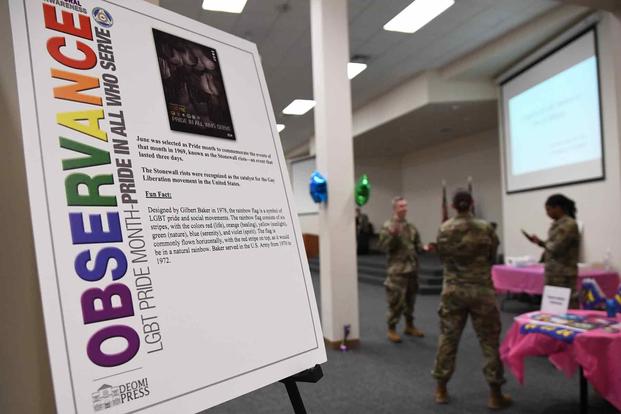Veterans who are female, LGBTQ and served after 9/11 are more likely to have experienced recent serious psychological distress compared to other veteran groups, according to a report released this week.
But while younger veterans are more likely to experience that distress, they're also more inclined to proactively seek out mental health services and drug or alcohol abuse treatment, according to the report. These post 9/11 vets are part of a generation that is more racially and ethnically diverse than prior groups of vets.
"The demographics of the active-duty force and veterans has been changing," said study co-author Megan Schuler, a researcher at the Rand Corp. think tank, in a phone interview with Military.com. "It's become more racially diverse, and there's been increasing numbers of women and growing appreciation of LGBT folks serving. And these subpopulations, just like in the general U.S. population, have different health and socioeconomic needs."
Read Next: Video Appears to Show Fire After Marine Hornet Landing Gear 'Anomaly' on Runway
Almost 7% of veterans met the study's criteria for recent psychological distress. Female veterans sought mental health treatment at more than two times the rate of male veterans, 31.3% to 12.3%, the study found.
The study didn't examine reasons why younger veterans were more likely to seek help, but millennials and Gen Z are less likely than other generations to stigmatize mental health needs and have helped drive mental health awareness.
Schuler said the new study took data from both the U.S. Census Bureau and the Department of Health and Human Services.
Schuler said that drawing from multiple data sets is key to painting a broader picture of veterans, one that can help lawmakers and officials make decisions.
"Before you can identify any reasonable policies, you have to know the population that you're trying to serve," Schuler added.
The findings come at a time when both the Department of Veterans Affairs and the Defense Department are trying to expand health care options for specific populations, such as LGBTQ veterans. The number of female veterans has also doubled since 2001, drawing more focus to the VA's health care capabilities.
Just this month, the VA announced that health care options for postpartum veterans would be extended from eight weeks to 12 months of care. One in seven women will experience postpartum depression after childbirth.
"There's really been a lot of generational shifts in our understanding and acceptance and openness around mental health in this country, " Schuler said. "The military would probably be very wise to continue embracing those kinds of generational changes in order to create an environment that is going to appeal to Gen Z recruits."
The number of veterans in the U.S. is shrinking, the report notes, reflecting decades of an all-volunteer force. Current veterans are more educated than their predecessors, and more racially and ethnically diverse, reflecting changes in the general population.
"Some of the outcomes that we're looking at, like mental health and substance use, these are behavioral health conditions that are often still underrecognized or undertreated," Schuler said. "So bringing these to light can help establish that need among veteran populations, and hopefully raise awareness and connect folks to treatment."
Related: Soldiers Are Getting Burned Out. Army Leadership Knows It's a Problem.













